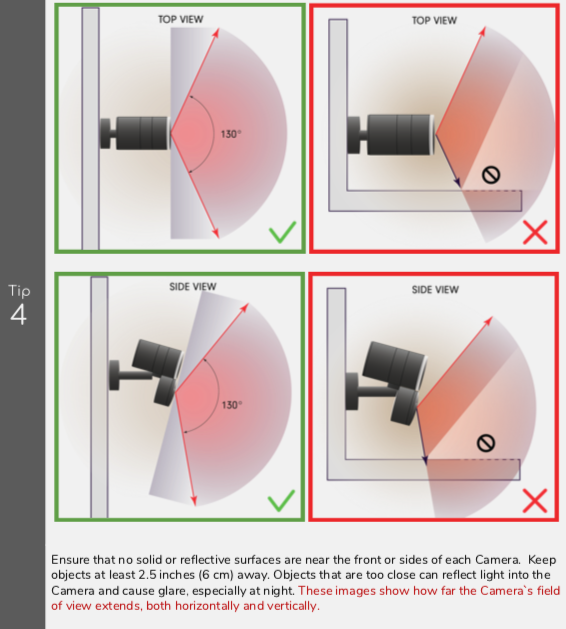What you need to know about Night Vision
What you need to know about Night Vision
Deep Sentinel Camera performance in the dark is often more critical than in the daylight; however, most cameras and systems are installed (and tested) in daylight hours. Systems that provide ideal video images in daylight can have completely different results while operating in the dark.

Follow the tips below to fine-tune your system to operate both night and day:
Night vision depends on the IR LED lights reflecting off surfaces
Much like light from a flashlight, the light from IR LED lights will not be visible unless it reflects off an object's surface. The IR LED lights on the Deep Sentinel cameras can reach approximately 20ft (6meters). If your camera points to an area that has objects beyond 20ft, then the IR LED light will struggle to illuminate anything, and the image will appear dark.
Video feeds that appear too dark do not mean the IR LED lights on your camera are not working. Objects will become visible as they move closer to the camera.
Keep the area immediately in front of each Camera clear
Some Night Vision issues are caused by the cameras infrared light reflecting off a surface near the camera. Symptoms include:
- Glare or blurry areas in the video.
- A part of the video field of view is bright white, while other parts are too dark.
Check that no solid or reflective surfaces are near the front or sides of each camera. Reflective surfaces such as metal, glass, and even some plants can cause light reflection. If possible, remove these objects or reposition the camera.
Tilt the camera away from surfaces such as wall siding, so it is outside the field of view. These surfaces can be illuminated by the camera's infrared light and cause the camera to automatically adjust the exposure, making other objects in the scene too dark.
Some trial and error will be necessary to find the Camera placement that suits your installation.

Pay attention to Camera mounting height
When considering Night Vision, it’s useful to keep in mind the height of your Camera. Mounting in a high position may increase the distance between the camera, the area, or objects, being monitored, therefore making them appear darker in Night Vision. This is critical to remember if considering mounting a Camera above the recommended height range (6-8ft).
For more guidance on camera mounting refer to Deep Sentinel Camera Placement Guide
Consider additional sources of illumination
If you have followed these tips, experimented with your setup, and are still not seeing results, then you may want to add another source of illumination. Consider a security night light that turns on with motion or a separate IR illuminator. If you opt with an IR illuminator, note that your Camera will still require objects/surfaces to be within range to reflect the light.